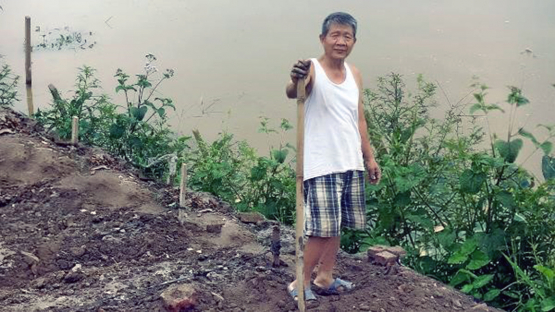
N-P-K fertilizer when applied in large quantity to rice a month after planting could cause eutrophication in receiving water bodies. (Photo: Institute for Nuclear Sciences and Technology, Hanoi)
By sampling water in the creeks and ponds upstream of the Nhue River where different vegetables and crops are grown and determining the isotopic composition of the water and nutrients, scientists could trace the pollution flow (see Using stable isotopes to trace agro-pollutants in the water) and could make recommendations to farmers who used more fertilizer than their crop could absorb, with the excess chemicals making its way into creeks and ponds feeding the Nhue.
Based on the nitrogen isotopic results, soil scientists can determine when to apply fertilizer and in what amounts, in line with the plants’ needs through their life cycle. By following this practice, fertilizer runoff was decreased and, in some cases, reduced pollution and eutrophication altogether.
Since 2011, SFRI has organized trainings on synchronization and appropriate fertilization techniques to 500 farmers as part of a pilot project. Farmer Do Trong Thang, one of the participants, said: “Now I know that we used to waste a lot of our money, as fertilizer application was not done in the right way, with up to 70% of the fertilizer escaping from the fields due to volatilization, leaching or runoff.” Farmers could reduce the amount of urea (N-fertilizer) applied to crops in the area by more than half, from 75 130 tonnes to 34 560 tonnes a year.
“Water degradation is not fully solved though, as industrial pollution and wastewater from households also ends up in the river. But in the meantime, water quality has somewhat improved already, and the impact will grow as more farmers participate in the programme,” said Dr Duc Nhan Dang, the project counterpart from the Institute for Nuclear Sciences and Technology in Hanoi.






